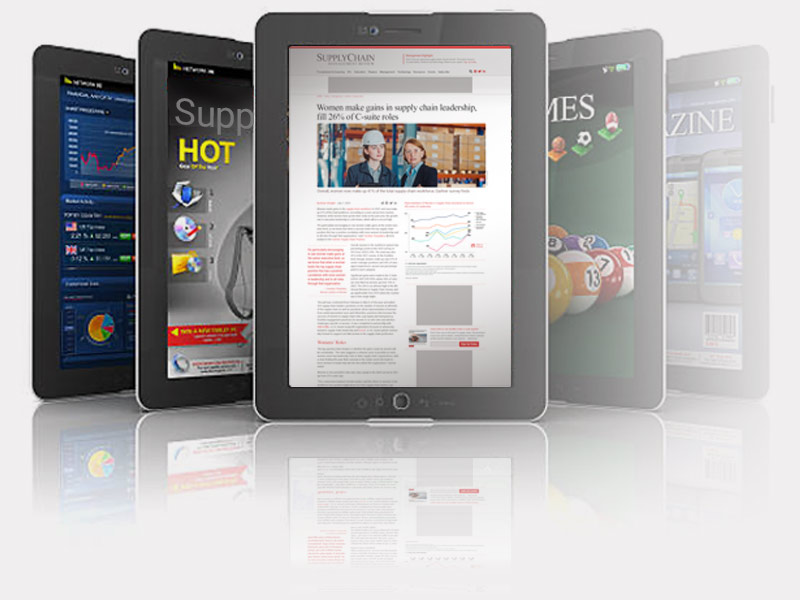Editor's note: Mark Dohnalek is President & CEO of Pivot International, the Kansas-based global product development, engineering & manufacturing firm.
Across the manufacturing and supply chain landscape, products and processes are constantly evolving to keep up with consumer demands and advanced techno-economics. As a result, product designers, from engineers to manufacturers along with the supply chain who support them, are embracing changes by taking a more interdisciplinary approach to drive broader applications of design-thinking and delivering next-level results. In some instances, we are witnessing seismic shifts in design that are shaping the industry for today, tomorrow, and far into the future. During this next decade, we can expect to see an acceleration in three design trends that are already rapidly underway. In addition to driving innovation and how we approach design – they will also impact how we operate our businesses.
1. Designers Will Be More Than Creative Contributors.
After a successful evaluation process, product managers have determined what will be designed, and designers were tasked with how it will be designed. This is changing as designers become better business and salespeople. The tension between the two groups will lesson as they team to drive revenue by strategizing about design from higher up the value chain. The trend of designers bringing a clearer sense of the financials related to resource allocation, process, and time management is making a huge difference as they are also bringing a greater awareness of ways to reduce risk and increase revenue through calculated design decisions. What's more, designers are becoming better salespeople: they're better able to articulate the why behind a design proposition and make a compelling case for how their idea will best solve a problem for a user and drive growth for a business. With more and more designers expanding their thinking and skillset in this way, we can expect to see a new generation of “growth designers” that employ experimental processes for the express purpose of optimizing business results.
2. Interdisciplinary Design is Driving Innovation.
Steve Jobs credited calligraphy as his inspiration for Apple's typography. We can anticipate even more connections utilizing multiple methods, which will become key drivers of innovation. Bridging disciplines like animation, themed entertainment design, motion media design, interactive design and game development, and even traditional Japanese arts like ikebana and origami. As interdisciplinary design comes into greater prominence, we will see tremendous advances in product design and development along with super-creative supply chain processes. By mixing conventional and futuristic technologies (SMT, AI, VR, 3D, etc.), we will see a new level of imagination come to life in superior engineering, manufacturing, and supply chain efficiencies.
3. Design-Thinking Will Be Applied to Business Challenges.
Just as we can expect that product development will benefit from interdisciplinary design, approaches toward improving business operations will also be influenced by design-thinking. Broadly defined, design-thinking can be understood as a systematic method for identifying the “opportunity potential” hidden within a problem in the service of creating a novel solution. Design-thinking shifts away from how to improve an existing game, and more concerned with how to reinvent it altogether. By contributing beyond the creative role, designers will begin to extend their expertise outside of their teams and work cross-functionally to identify and overcome inefficiencies company-wide. This will help the supply chain make positive and bottom-line improving gains while manufacturers will have more room to grow and expand. From a company's recruiting practice to leadership development to strategic planning to sales training to project management to the breaking down of silos between departments, design-thinking is a growth technology that will have a formidable impact on both operations and culture.
SC
MR


Latest Supply Chain News
- Israel, Ukraine aid package to increase pressure on aerospace and defense supply chains
- How CPG brands can deliver on supplier diversity promises
- How S&OP provides the answer to in-demand products
- AI, virtual reality is bringing experiential learning into the modern age
- Humanoid robots’ place in an intralogistics smart robot strategy
- More News
Latest Podcast

 Explore
Explore
Business Management News
- How CPG brands can deliver on supplier diversity promises
- How S&OP provides the answer to in-demand products
- AI, virtual reality is bringing experiential learning into the modern age
- Tips for CIOs to overcome technology talent acquisition troubles
- There is still work to do to achieve supply chain stability
- Blooming success: The vital role of S&OE in nurturing global supply chains
- More Business Management
Latest Business Management Resources

Subscribe

Supply Chain Management Review delivers the best industry content.

Editors’ Picks





